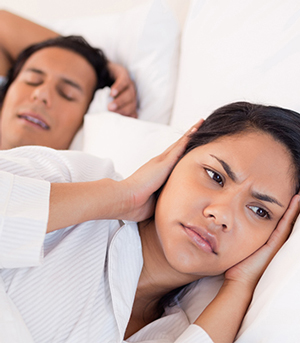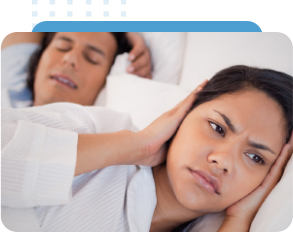Habitual snoring affects up to 10% of the world population mainly between the decades of the 40s to 60 years frequently preceded by weight gain. There is a clear association between various sleep disorders and obesity, one of the epidemics of the twenty-first century. More than 50% of obese people have some type of breathing disorder during sleep and in the same way patients with sleep impairment due to severe snoring are more prone to weight gain. Under-diagnosed snoring related conditions range between 60% and 80% of general population.

Snoring seems normal to some but should not be considered such as habitual snoring by means, snoring for more than 4 days a week usually is associated with periods of silence called apnoeas where there is an intermittent drop in blood oxygenation due to obstruction at different segments of the upper airway whose duration ranges from 10 seconds to one minute and ends with a loud noise, suffocation, moan or sudden body movements and micro-awakenings. Snoring can be also accompanied along with sudden movements of legs and arms can cause the couple to have to sleep in another bed or room increasing the risk of anxiety and depression. Deep sleep gets fragmented by these microarousals resulting in memory loss, irritability, lack of cell repair and regeneration that not only promulgates premature aging but also increase the risk of work or traffic accidents by up to 20%.
Sleep-disordered breathing can originate from different segments of the upper airway; therefore, the entire upper airway must be examined during evaluation. It should be clear that early detection of habitual snorers or sleep apnoea sufferers has a definitive impact in preventing high blood pressure, obesity, cardiovascular, cerebrovascular accidents and aging.
Due to the high morbidity and mortality associated with habitual snoring and Sleep apnoeas the early diagnosis and treatment is of vital importance.The growing need to sensitize, educate and embrace patients suffering from nasal conditions such functional nasal breathing disorders affecting their quality of sleep deserves a thorough and oriented medical history as the best method to suspect a sleep breathing disorder.
The importance of the interdisciplinary care ensures efficient results and benefits both the patients and their family environment.
A comprehensive program composed by weight loss is achieved through the combination of healthy habits, exercise and even the application of minimal invasive surgical techniques could highly impact the quality of life of those whose snore or suffer from sleep apnoea.
Additional notes:
The subjects with the nose mechanically obstructed awoke more often, had a greater number of changes in sleep stage, had a prolongation of REM latency and spent a greater amount of time in stage I non-REM sleep (light sleep).
Nasal obstruction caused a significant increase in the number of apnoea during sleep, in the number of microarousals associated with nonapneic breathing disorders in sleep and in the amount of wake time within sleep.
These results suggest that patients with complaints of snoring or sleep apnoea can easily breathe through the mouth during sleep, and also that chronic nasal obstruction may induce obstructive sleep apnoea
No single procedure is effective in treating all OSAHS or snorers. Treatment should be tailored to the anatomy of each patient.





